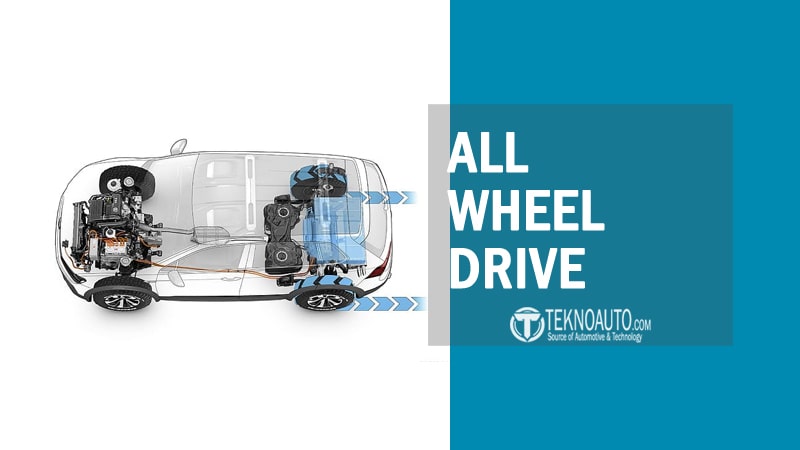When shopping for a new car—whether it’s a compact SUV, a family sedan, or a cutting-edge electric vehicle—one term that frequently appears in the specifications is All Wheel Drive (AWD). For many drivers, especially those living in regions with variable weather, the mention of AWD immediately suggests improved traction, greater control, and better safety. But what exactly is All Wheel Drive, and when is it truly beneficial?
In the simplest sense, AWD refers to a drivetrain system that powers all four wheels of a vehicle, either full-time or on demand. Unlike front-wheel drive (FWD) or rear-wheel drive (RWD), which send power to only two wheels, AWD is designed to distribute engine torque between the front and rear axles. This results in improved grip, especially in slippery or uneven road conditions.
However, the value of All Wheel Drive extends beyond snow-covered roads or muddy trails. Modern AWD systems are engineered to optimize traction, handling, and driver confidence across a range of environments. From navigating rainy highways to accelerating on gravel paths, AWD helps your vehicle maintain stability and composure where two-wheel drive systems might struggle.
Despite its advantages, AWD is not always the right solution for every driver or every scenario. It typically comes with added costs, mechanical complexity, and fuel consumption compared to simpler drivetrains. That’s why understanding how AWD works, its benefits, limitations, and real-world applications is essential before deciding if it’s the right fit for your driving needs.
In this article, we’ll explore the technology behind All Wheel Drive systems, how they compare with other drivetrain layouts, and when AWD truly makes a difference—whether you’re behind the wheel of a gasoline-powered SUV or a dual-motor electric car.
What Is All Wheel Drive (AWD)?
All Wheel Drive, commonly abbreviated as AWD, is a drivetrain configuration that delivers power to all four wheels of a vehicle simultaneously—either continuously or when needed. This system is designed to maximize traction, stability, and control, especially in conditions where two-wheel drive setups might lose grip.
Unlike front-wheel drive (FWD), where the engine sends power only to the front wheels, or rear-wheel drive (RWD), which powers the rear wheels, AWD distributes engine torque between both axles. This can happen in two ways: some AWD systems are full-time, constantly powering all four wheels, while others are part-time or automatic, engaging the rear or front axle only when the system detects slippage or uneven traction.
AWD vs Other Drivetrains at a Glance
| Drivetrain | Power Distribution | Common in | Best For |
|---|---|---|---|
| FWD | Front wheels only | Compact cars, sedans | Fuel efficiency, urban driving |
| RWD | Rear wheels only | Sports cars, trucks | Performance, towing |
| AWD | All wheels (auto or full-time) | SUVs, crossovers, EVs | All-weather traction |
| 4WD | All wheels (manually engaged) | Trucks, off-roaders | Serious off-roading |
Whereas 4WD (Four-Wheel Drive) systems are typically designed for rugged terrain and require manual activation, All Wheel Drive is generally optimized for on-road use, activating seamlessly and automatically in response to road conditions. This makes it ideal for drivers who want extra grip in rain, snow, or gravel, without the complexity of manually switching drive modes.
AWD: Not Just for Winter Roads
Many people associate AWD with snowy or icy environments, and while it certainly shines in those conditions, AWD systems also provide added security in everyday driving scenarios:
- During sudden acceleration on a wet road
- When cornering at speed on gravel or dirt
- On uneven or hilly terrain
- While merging or overtaking at high speed
Today’s AWD systems are found across a wide range of vehicle types—from practical crossovers like the Toyota RAV4 AWD, to high-performance sedans like the Audi A6 Quattro, and even electric cars like the Tesla Model Y Dual Motor.
In short, AWD gives your vehicle the flexibility to adapt to changing traction demands on the fly, which is why it’s increasingly common in both mainstream and premium models.
How All Wheel Drive Works

At its core, an All Wheel Drive (AWD) system is designed to intelligently distribute engine torque between the front and rear wheels to optimize traction and stability. But not all AWD systems are built the same. Different manufacturers implement AWD with varying technologies, and understanding these differences helps you appreciate how modern vehicles adapt to diverse driving conditions.
Basic AWD Mechanism

The typical All Wheel Drive system begins with a transaxle or transmission unit that sends power from the engine into a center differential or an electronic coupling. From there, power is split between the front and rear axles. Depending on the system, this distribution might be fixed or vary dynamically based on road conditions.
Modern AWD systems often use electronic sensors and control units that monitor:
- Wheel speed
- Throttle input
- Steering angle
- Slip detection
If one or more wheels start to lose grip, the system responds in milliseconds—redirecting torque to the wheels with the most traction. This real-time correction improves control during acceleration, cornering, and braking.
Full-Time vs Part-Time AWD
Full-Time AWD
Also known as permanent AWD, this system always powers all four wheels. The power distribution can be even (50/50 front to rear) or rear-biased (like in many luxury performance cars). A center differential or multi-plate clutch system manages torque balance continuously.
Pros:
- Consistent grip in all conditions
- Predictable handling
- No driver intervention needed
Cons:
- Slightly higher fuel consumption
- More wear on drivetrain components
Examples:
- Subaru Symmetrical AWD
- Audi Quattro
- BMW xDrive (rear-biased)
Part-Time or On-Demand AWD
This system operates primarily in FWD or RWD mode, engaging the other axle only when needed—for example, when wheel slip is detected. It uses electronic clutches or couplings to activate AWD automatically.
Pros:
- Better fuel economy
- Less drivetrain drag when AWD isn’t needed
Cons:
- Less responsive than full-time AWD in sudden traction loss
- Slight delay in engagement
Examples:
- Honda Real-Time AWD
- Toyota Dynamic Torque Control AWD
- Ford Intelligent AWD
AWD in Electric Vehicles
Electric vehicles (EVs) offer a unique approach to All Wheel Drive. Rather than using a central transmission and differential, EVs use individual electric motors on each axle (or even at each wheel in advanced systems). This results in instant torque distribution and improved response times.
Dual-Motor AWD Setup:
- One electric motor powers the front axle
- Another powers the rear axle
- Software governs torque split based on traction, acceleration, and steering input
Advantages:
- No mechanical driveshaft or differential needed
- Extremely fast torque delivery
- Precise traction control using software
- Enhanced regenerative braking control
Examples of AWD EVs:
| Model | Front Motor | Rear Motor | Drive Type |
|---|---|---|---|
| Tesla Model Y Dual Motor | Yes | Yes | AWD (dual motor) |
| Hyundai Ioniq 5 AWD | Yes | Yes | AWD |
| Volvo XC40 Recharge AWD | Yes | Yes | AWD |
Some EVs even use torque vectoring, where power is applied differently to each wheel independently. This enables sharper handling and improved cornering agility—especially in performance-focused electric vehicles.
Software and Sensors: The Brain Behind Modern AWD
Modern All Wheel Drive isn’t just mechanical—it’s highly computerized. Vehicles equipped with traction control, electronic stability control (ESC), and drive mode selectors use a network of sensors to fine-tune how power is distributed.
In many cars, switching to “Snow,” “Sport,” or “Off-Road” mode triggers changes in:
- Torque split ratio
- Throttle sensitivity
- Gear shifting patterns (in automatics)
- Brake-based torque vectoring
This level of customization makes AWD more adaptive than ever, giving drivers a confident experience across many terrains—whether climbing a gravel incline or gliding through heavy rain on the highway.
Key Benefits of All Wheel Drive
All Wheel Drive (AWD) systems have grown in popularity not just because of their mechanical sophistication, but because they offer real-world benefits that improve both safety and performance. Whether you’re commuting on wet roads, driving through snow, or just want peace of mind during unpredictable weather, AWD gives your vehicle a significant edge.
Enhanced Traction in Bad Weather
One of the most recognized advantages of AWD is its ability to maximize traction in poor weather conditions. Rain, snow, ice, or loose gravel can cause wheels to slip, especially during acceleration or turning. AWD minimizes this by distributing torque across all four wheels, allowing the vehicle to maintain grip even when individual tires lose contact or traction.
This is particularly valuable when:
- Starting from a stop on snowy roads
- Climbing hills in wet conditions
- Driving over uneven or muddy terrain
- Making turns on rain-slicked pavement
Even though AWD isn’t a substitute for winter tires, it dramatically improves your chances of maintaining control in challenging conditions.
Improved Stability and Handling
All Wheel Drive systems contribute to better vehicle balance and handling, especially during cornering and sudden maneuvers. When power is distributed to both axles, the load on each tire is reduced, which enhances traction and stability. This results in:
- More confidence in curves and turns
- Reduced chances of oversteer or understeer
- Smoother transitions during lane changes
This is especially noticeable in performance-oriented AWD systems like Audi’s Quattro or BMW’s xDrive, which are tuned to enhance both grip and driving dynamics.
Safer Acceleration in Low-Grip Conditions
On slippery surfaces—like wet asphalt or icy parking lots—vehicles with All Wheel Drive can accelerate more predictably without wheelspin. Power is automatically shifted to the wheels with the most grip, allowing for smoother launches and more control during throttle application.
This is particularly useful:
- When merging onto highways from slippery ramps
- During stop-and-go traffic in bad weather
- On inclines with mixed terrain (e.g., snow patches + dry spots)
FWD or RWD vehicles might struggle in these scenarios due to loss of traction on the drive wheels. AWD, by contrast, spreads the torque load and prevents slippage before it happens.
Better Light Off-Road Capability
Although All Wheel Drive isn’t designed for extreme off-roading like 4WD systems are, it still provides significant capability on light trails and unpaved roads. For weekend adventurers, campers, and rural commuters, AWD vehicles offer enough grip and clearance to handle:
- Dirt paths
- Forest roads
- Gravel lots
- Wet grass or fields
Crossovers like the Subaru Outback or Toyota RAV4 AWD give everyday drivers the flexibility to explore without switching into a true off-roader.
Note: AWD systems in these vehicles often include drive modes like “X-MODE” or “Trail” that fine-tune traction for mild off-road terrain.
Increased Confidence and Driver Peace of Mind
Perhaps one of the most overlooked advantages of All Wheel Drive is psychological—the sense of confidence it gives the driver. Even if you rarely face poor driving conditions, knowing your vehicle is equipped to handle them provides peace of mind.
This translates to:
- Safer family trips in uncertain weather
- Fewer panic moments during quick maneuvers
- Improved driving confidence for new or cautious drivers
When the road conditions suddenly change—from dry pavement to wet leaves or icy patches—AWD works silently in the background to stabilize the car and keep it moving forward safely.
Enhanced Resale Value and Market Demand
Vehicles equipped with All Wheel Drive tend to retain their value better, especially in regions where weather plays a major role in driving decisions. In used car markets across North America, Europe, and parts of Asia, AWD-equipped trims often:
- Sell faster
- Have higher resale prices
- Are perceived as safer and more premium
This makes All Wheel Drive not just a functional advantage, but a financially strategic one if you plan to resell your vehicle in a few years.
Drawbacks of AWD Systems
While All Wheel Drive (AWD) offers a variety of advantages—especially in terms of traction, safety, and driving confidence—it’s not without its trade-offs. Understanding the limitations and costs of AWD is crucial for making a well-informed vehicle purchase decision. In many cases, drivers opt for AWD out of assumption rather than actual need, which can lead to unnecessary expenses or compromised efficiency.
Higher Cost and Mechanical Complexity
One of the most immediate drawbacks of AWD is its higher initial cost. Vehicles equipped with AWD tend to cost $1,000–$3,000 more than their front-wheel or rear-wheel drive counterparts. This price difference isn’t just for marketing—All Wheel Drive systems include additional components such as:
- Center differentials or transfer cases
- Multi-plate clutches or couplings
- Driveshafts and extra axles
- Control modules and sensors
More parts mean more engineering, manufacturing, and installation expenses. Even at the dealership, AWD trims often come bundled with higher-end packages, inflating the total price further.
Increased Maintenance and Repair Costs
More components also mean more potential points of failure. Over time, AWD vehicles may incur higher maintenance bills due to:
- Transfer case or differential fluid replacements
- Extra wear on tires (AWD systems require even tread across all tires)
- Complex repairs if the AWD system malfunctions
- Possible sensor recalibrations in modern electronically controlled AWD setups
While AWD systems are generally reliable, any drivetrain component failure—like a faulty coupling or failing center differential—can be expensive to diagnose and repair. Furthermore, many mechanics recommend replacing all four tires at the same time to avoid damaging All Wheel Drive mechanisms, which can add to your long-term cost.
Lower Fuel Efficiency Compared to FWD or RWD
All Wheel Drive vehicles typically consume more fuel than their two-wheel drive counterparts. The extra components increase vehicle weight and drivetrain drag, which reduces overall efficiency. Depending on the make and model, fuel economy may drop by 1 to 3 MPG or more.
For example:
- A Toyota RAV4 FWD averages ~30 MPG combined
- The AWD version averages ~27 MPG combined
While newer AWD systems with intelligent disengagement can reduce this gap, it still exists—particularly for those who drive long distances daily or value maximum fuel savings.
False Sense of Security in Hazardous Conditions
Perhaps one of the most overlooked drawbacks of AWD is driver overconfidence. While AWD helps with acceleration and traction, it does not improve braking performance or cornering grip beyond certain limits. Many drivers assume All Wheel Drive makes their vehicles invincible in snow or rain, but:
- AWD does not shorten braking distance on ice
- All Wheel Drive does not prevent hydroplaning
- AWD may lead drivers to take sharper turns at higher speeds
Without proper tires (especially winter tires) and cautious driving, All Wheel Drive vehicles can still slide, spin, or crash in bad weather.
Not Ideal for Dry or Mild Climates
If you live in a region with consistently dry weather and flat terrain, AWD may offer little to no advantage in your daily driving. In such environments:
- FWD or RWD vehicles perform just as well in most conditions
- You may be paying for a system that rarely engages
- Fuel economy and maintenance trade-offs may not justify the benefit
In fact, some compact crossovers and sedans offer better overall value in their FWD versions unless you’re regularly driving on snow, hills, or dirt roads.
Added Vehicle Weight
All Wheel Drive systems can add 100–200 pounds or more to a vehicle, which:
- Reduces acceleration (especially in small engines)
- Impacts suspension tuning
- Increases tire wear over time
In performance-focused cars, this added weight must be counterbalanced by stiffer suspension or larger engines—raising both cost and complexity.
Less Cabin and Cargo Space in Some Designs
In vehicles where All Wheel Drive is integrated into a platform originally designed for FWD or RWD, the inclusion of extra drivetrain components (like driveshafts and rear differentials) can sometimes intrude into cabin or cargo space. This is more common in compact sedans or hatchbacks, where every inch of space matters.
Summary Table: AWD Drawbacks
| Drawback | Impact |
|---|---|
| Higher initial cost | Adds $1,000–$3,000 to vehicle price |
| Increased maintenance complexity | More moving parts = more service points |
| Lower fuel economy | Typically 1–3 MPG lower than 2WD versions |
| False confidence | May lead to riskier behavior in snow or rain |
| Limited use in dry regions | Little benefit if you don’t encounter slippery terrain |
| Additional weight | Slightly reduces performance and efficiency |
| Possible space limitations | Some AWD systems reduce cabin or cargo room |
While AWD is undeniably useful in many scenarios, it’s not a one-size-fits-all solution. Evaluating how often you’ll benefit from its features versus how much you’ll pay for them—both up front and over time—is essential before choosing an AWD-equipped vehicle.
AWD vs FWD vs RWD vs 4WD

When choosing a vehicle, understanding the difference between drivetrain systems is essential—not just for performance, but for safety, fuel economy, and long-term usability. Each system—AWD (All Wheel Drive), FWD (Front-Wheel Drive), RWD (Rear-Wheel Drive), and 4WD (Four-Wheel Drive)—has distinct characteristics that make it more or less suitable depending on your driving needs and environment.
Let’s break down how these systems compare in key areas:
Traction and Weather Conditions
All Wheel Drive shines in unpredictable weather, offering superior traction on wet, snowy, or icy roads. It automatically redistributes torque where it’s needed most, making it ideal for variable climates and mixed-use terrain.
FWD, while efficient, struggles more in low-traction conditions. Most power is delivered to the front wheels, which can lead to understeer or tire spin on slippery surfaces.
RWD performs best on dry pavement and in performance applications but is generally the least effective in snow or rain due to rear wheel slippage under low traction.
4WD is designed for off-road or rugged terrain. It delivers high torque to all wheels equally and is often manually engaged. In deep snow or mud, it outperforms AWD, but on dry roads it’s less refined and less fuel-efficient.
Fuel Economy and Efficiency
FWD systems are typically the most fuel-efficient because they’re lightweight and mechanically simple. Vehicles with FWD generally consume less fuel and are cheaper to maintain.
AWD systems use more components and add weight, reducing efficiency by 1–3 MPG. Some modern AWD vehicles mitigate this using disconnect systems or on-demand operation.
RWD sits between FWD and AWD in terms of fuel use but can be more efficient than All Wheel Drive in dry conditions due to reduced drivetrain drag.
4WD vehicles are the least fuel-efficient, especially when the system is engaged. Their rugged build, heavy components, and off-road capabilities come at the cost of efficiency.
Handling and Driving Dynamics
For enthusiasts or performance drivers, RWD delivers the most dynamic experience. It offers balanced weight distribution and is favored in sports cars for its cornering characteristics.
FWD tends to understeer, especially when pushed hard in turns, but is more forgiving for everyday use and better in tight urban driving.
AWD blends the strengths of both, offering balanced traction and stability. It’s not as nimble as RWD in dry conditions, but provides more confidence in bad weather or during aggressive acceleration.
4WD isn’t built for high-speed cornering or refined handling. It shines in low-speed, high-torque environments like trails or steep inclines.
Off-Road vs On-Road Capability
| Drivetrain | On-Road Comfort | Light Off-Road | Heavy Off-Road | Snow/Ice |
|---|---|---|---|---|
| FWD | High | Low | Very low | Moderate |
| RWD | High | Low | Very low | Low |
| AWD | High | Moderate | Low | High |
| 4WD | Moderate | High | Very high | High |
AWD is perfect for light off-road adventures—gravel, dirt paths, light mud.
4WD is made for rough, rocky, or snowy backcountry with hill descent control, low-range gears, and locking differentials.
Cost of Ownership and Maintenance
- FWD wins in low ownership cost: fewer parts, better fuel economy, lower repair bills.
- RWD can have moderate maintenance depending on configuration, especially for trucks or older models.
- AWD is more expensive to maintain and repair due to complexity—more sensors, couplings, and fluid services.
- 4WD can be costly if used off-road regularly due to increased wear and tear.
Summary Table: AWD vs FWD vs RWD vs 4WD
| Feature/Need | FWD | RWD | AWD | 4WD |
|---|---|---|---|---|
| Traction (Rain/Snow) | Moderate | Low | High | Very High |
| Fuel Efficiency | High | Moderate | Lower | Low |
| Performance Handling | Low | High | Moderate to High | Low |
| Off-Road Capability | Very Low | Low | Moderate | Very High |
| Purchase Cost | Low | Moderate | Higher | Higher |
| Maintenance Cost | Low | Moderate | High | High |
| Ideal For | City drivers | Enthusiasts | All-weather use | Rugged terrain |
Each system has its place:
- Choose FWD for urban driving, affordability, and fuel savings.
- Choose RWD for performance, towing, and rear balance.
- Choose AWD for safety, mixed conditions, and comfort in bad weather.
- Choose 4WD for serious off-road adventures, rural environments, or heavy snow.
When You Actually Need AWD
All Wheel Drive (AWD) is a powerful tool—but like any tool, it’s most effective when used in the right context. While the idea of added grip and stability is appealing to many drivers, not everyone truly needs AWD for their daily driving. To determine whether AWD is worth the investment, it helps to consider several key factors: your location, lifestyle, and driving environment.
Geographic Considerations
Your region’s climate and road conditions are often the biggest deciding factors in whether AWD is a necessity or a luxury.
Snowy or Icy Environments
If you live in areas where snow, black ice, and freezing rain are common—such as northern U.S. states, parts of Europe, or mountainous regions—AWD can significantly improve winter safety. It helps the vehicle:
- Accelerate on slick surfaces
- Maintain traction on slushy roads
- Navigate unplowed streets or steep driveways
Note: AWD does not replace winter tires. But when paired with proper seasonal tires, it offers enhanced control and peace of mind in dangerous conditions.
Rainy or Flood-Prone Areas
Regions with frequent rain or monsoons—like the Pacific Northwest, Southeast Asia, or tropical zones—often benefit from All Wheel Drive. Wet roads reduce grip, especially when water pools or oil slicks are present. AWD systems react quickly to loss of traction, helping prevent hydroplaning and wheelspin.
Rural or Hilly Terrain
If your commute includes steep hills, dirt roads, or uneven terrain, AWD will help ensure consistent power delivery and traction. It’s also beneficial for:
- Gravel roads in countryside towns
- Steep driveways in suburban developments
- Farms, vineyards, or undeveloped properties
Lifestyle and Driving Habits
Your everyday activities and how you use your vehicle also influence the need for AWD.
Outdoor Enthusiasts
Campers, hikers, mountain bikers, or skiers often venture beyond paved roads. Even if you’re not off-roading, accessing a trailhead or remote cabin may involve:
- Unpaved forest roads
- Light mud or loose gravel
- Wet grassy fields
AWD-equipped crossovers like the Subaru Crosstrek, Toyota RAV4 AWD, or Mazda CX-50 can handle these situations easily.
Frequent Travelers
If you frequently drive long distances across varied landscapes or weather zones, AWD offers greater adaptability. Driving from a dry coastal city to a mountain resort? All Wheel Drive covers both.
Family Vehicles
Parents often prioritize safety and predictability. All Wheel Drive crossovers and minivans offer additional stability, especially when transporting kids in all-weather conditions.
Urban or Suburban Drivers: Do You Really Need AWD?
If you live in a mild-climate city with well-maintained roads and only encounter rain or snow a few days per year, you probably don’t need AWD.
FWD vehicles:
- Cost less up front
- Burn less fuel
- Require less maintenance
For many city drivers, a good set of all-season or winter tires will have a bigger impact on safety than an AWD system.
AWD for Safety-Conscious Drivers
There’s a growing trend of drivers choosing AWD not out of necessity, but for confidence. Even if you don’t live in an extreme environment, having All Wheel Drive on standby can make you feel more secure—especially if:
- You’re new to driving
- You share the vehicle with inexperienced drivers
- You frequently drive early in the morning (when roads may be icy)
Vehicles like the Honda CR-V AWD or Hyundai Tucson AWD offer an excellent balance of urban practicality and extra capability for rare bad-weather scenarios.
Cost-Benefit Scenarios: Is AWD Worth It?
| Scenario | AWD Recommended? | Reason |
|---|---|---|
| Live in snowy mountain area | Yes | AWD helps with hills, snow, and slick roads |
| Commute in sunny city with dry roads | No | Extra cost, no major traction advantage |
| Weekend outdoor trips on light trails | Yes | Occasional rough terrain demands extra grip |
| Occasional rain but flat paved roads | No | Quality tires may suffice |
| Drive family across seasons/weather zones | Yes | Versatility and safety in mixed conditions |
| EV driver in mixed weather regions | Yes | Dual-motor EV AWD ensures better year-round use |
Electric Vehicles: When AWD Makes a Difference
In the context of electric vehicles (EVs), All Wheel Drive often means dual-motor configurations, offering more than just traction. You also get:
- Faster acceleration
- Improved regenerative braking
- Better weight distribution
EVs like the Tesla Model 3 Dual Motor AWD or Ford Mustang Mach-E AWD deliver better performance and range management than their single-motor counterparts—making AWD more than a weather-based consideration.
If you regularly encounter unpredictable terrain, severe weather, or simply want a more versatile and confident driving experience, All Wheel Drive can be a worthwhile investment. But for many drivers—especially in temperate urban settings—a fuel-efficient FWD vehicle with the right tires might serve just as well.
Choosing AWD should be about matching your vehicle’s capability to your actual environment and needs—not just marketing hype or fear of the unknown.
Common Vehicles That Use AWD
As All Wheel Drive (AWD) becomes more advanced and widely available, a growing number of vehicles across various classes now offer this feature—not just rugged SUVs, but also sedans, crossovers, minivans, and electric cars. Whether you’re looking for a daily driver with enhanced traction or a family vehicle with extra grip for seasonal travel, there are plenty of AWD-equipped models to choose from.
Let’s explore popular AWD vehicles by category, complete with real-world examples to help you identify which might suit your needs best.
AWD Sedans

Once limited to premium brands, AWD sedans are now widely available, offering drivers the safety of four-wheel traction in a sleek, road-focused package.
Popular models include:
- Subaru Legacy AWD – Known for its standard AWD system and all-weather reliability.
- Toyota Camry AWD – Offers AWD in its mid-tier trims, making it accessible and practical.
- Mazda6 i-ACTIV AWD (select markets) – A stylish alternative with predictive All Wheel Drive.
- BMW 3 Series xDrive – A luxury sedan with rear-biased AWD for sporty handling.
- Audi A4 Quattro – A well-balanced executive sedan with excellent grip and refinement.
AWD Crossovers & SUVs
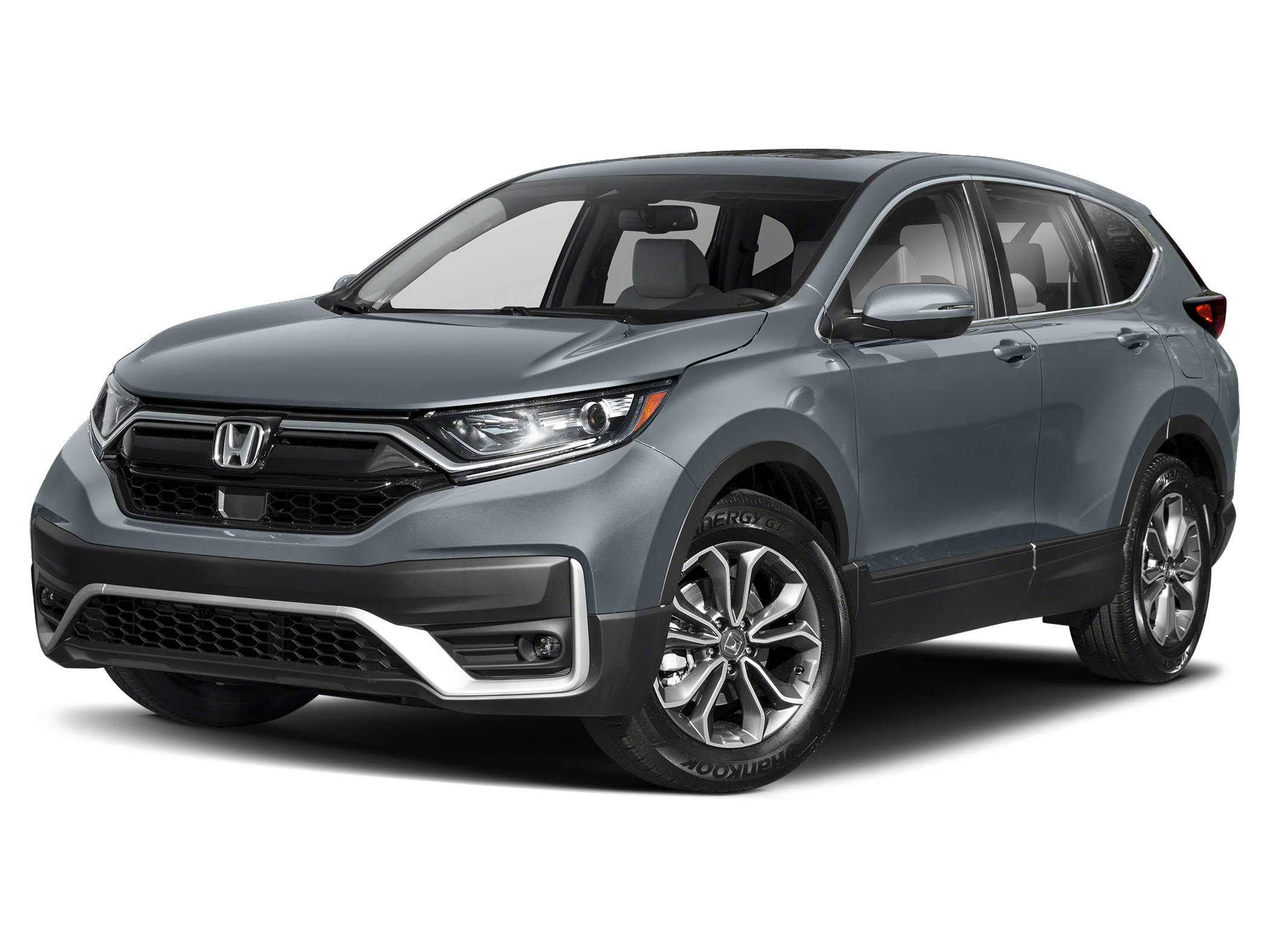
This is the most popular segment for AWD vehicles. Crossovers and SUVs equipped with All Wheel Drive are ideal for families, commuters, and outdoor lovers alike.
Top models include:
- Subaru Forester AWD – A favorite for snow and trail driving.
- Toyota RAV4 AWD – Offers multiple AWD variants including the off-road-focused Adventure trim.
- Honda CR-V AWD – A top choice for reliability and mild off-road use.
- Mazda CX-5 AWD – Features torque-vectoring for dynamic cornering.
- Hyundai Tucson HTRAC AWD – Comes with terrain modes for snow, mud, and sand.
- Kia Sportage AWD – A value-packed crossover with a surprisingly capable AWD system.
AWD Electric Cars
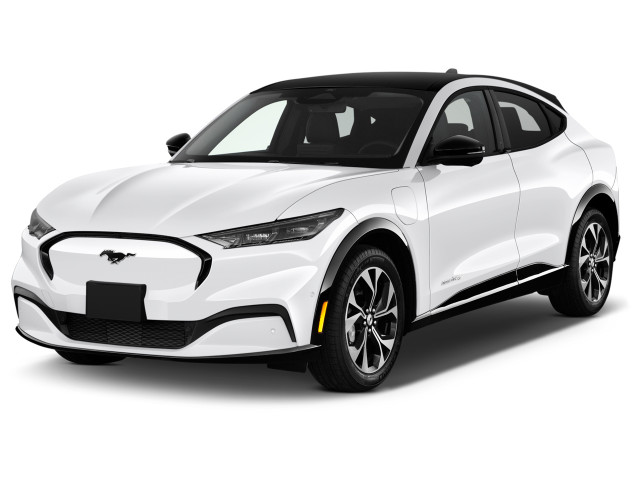
Electric vehicles (EVs) are redefining what All Wheel Drive means—many use dual-motor setups with no need for mechanical connections. These cars often accelerate quicker and offer more precise torque control than their gas-powered counterparts.
Popular AWD EVs include:
- Tesla Model Y Dual Motor AWD – Fast, efficient, and highly popular.
- Ford Mustang Mach-E AWD – Combines American muscle inspiration with electric AWD.
- Hyundai Ioniq 5 AWD – Stylish and powerful with fast charging.
- Kia EV6 AWD – Offers impressive range and handling.
- Volkswagen ID.4 AWD Pro – Practical, spacious, and capable.
AWD Minivans
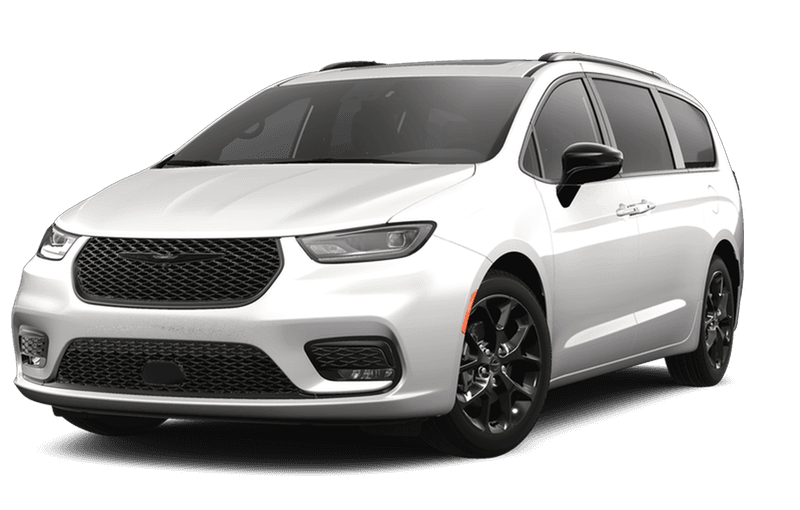
Minivans with All Wheel Drive are rare but crucial for families needing both space and all-weather security.
Notable examples:
- Toyota Sienna AWD – The only hybrid minivan with available AWD, offering excellent fuel economy.
- Chrysler Pacifica AWD – Combines premium features with optional AWD on gasoline models.
AWD Pickup Trucks
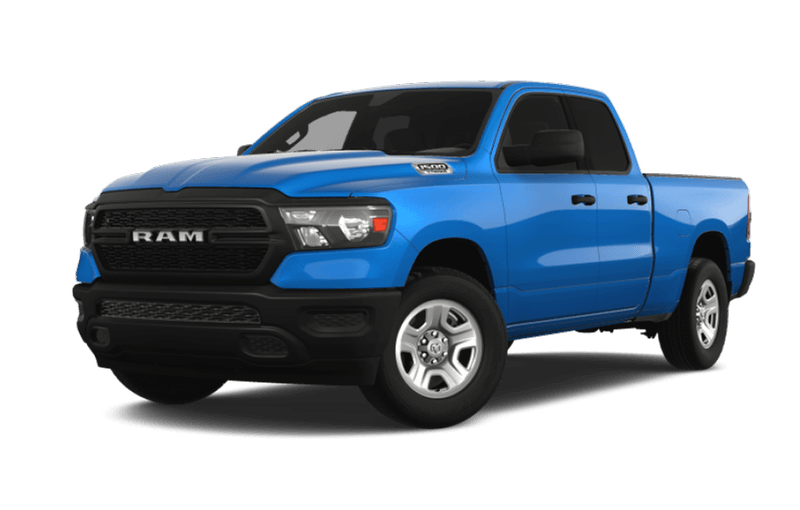
While many trucks come with 4WD, several now offer automatic AWD modes for on-road use.
Examples include:
- Ford F-150 AWD (Auto 4WD mode) – Delivers full traction control without switching manually.
- Ram 1500 AWD (Laramie/Longhorn trims) – Blends luxury and grip.
- Rivian R1T AWD (Electric Truck) – Dual or quad-motor All Wheel Drive with off-road smarts.
Summary Table: Common AWD Vehicles by Type
| Vehicle Type | Example Models | AWD Type |
|---|---|---|
| Sedans | Subaru Legacy, Audi A4, Toyota Camry | Full-time / On-demand |
| Crossovers/SUVs | Subaru Forester, Honda CR-V, Toyota RAV4 | On-demand / Active torque split |
| Electric Cars | Tesla Model Y, Hyundai Ioniq 5, Kia EV6 | Dual-motor AWD (software-based) |
| Minivans | Toyota Sienna, Chrysler Pacifica | On-demand |
| Pickup Trucks | Ford F-150, Ram 1500, Rivian R1T | Auto AWD / Electric torque split |
AWD is no longer exclusive to off-road SUVs or premium vehicles. It’s now a mainstream feature across every major automotive segment—often available even in entry-level trims. Whether you’re looking for a commuter sedan, a family minivan, or an eco-conscious electric SUV, there’s likely an AWD-equipped model built for your needs.
AWD in the Future: EVs and Intelligent Systems
As the automotive industry transitions toward electrification, automation, and smarter mobility, All Wheel Drive (AWD) systems are also evolving—faster and more intelligently than ever before. Traditional mechanical drivetrains are gradually giving way to electrically controlled, software-optimized AWD architectures that offer unprecedented precision, flexibility, and efficiency.
Let’s explore how All Wheel Drive is being redefined in the age of electric vehicles (EVs), autonomous driving, and software-defined cars.
Electric AWD: Simpler, Faster, Smarter
In a traditional gas-powered car, AWD systems rely on complex gearsets, transfer cases, and clutches to split torque between front and rear axles. But in electric vehicles, AWD is often as simple as adding another motor.
Dual-Motor AWD Systems
EVs like the Tesla Model Y, Hyundai Ioniq 5, and Ford Mustang Mach-E feature dual-motor setups:
- One motor on the front axle
- One motor on the rear axle
- Software governs real-time torque distribution
This design eliminates the need for mechanical connections and allows the vehicle to respond almost instantly to changes in grip. Torque can be redirected in milliseconds—far faster than a mechanical system could manage.
Advantages of Electric AWD
- No driveshaft or differential required
- Seamless torque vectoring for enhanced stability and cornering
- Energy efficiency through intelligent power management
- Better packaging (more interior room, flat floors)
Some premium EVs even offer quad-motor AWD, where each wheel has its own motor—enabling precise torque control at each corner.
AWD and Software-Defined Driving Modes
Today’s AWD systems are more than just mechanical aids—they are intelligent systems integrated with vehicle software. Many All Wheel Drive-equipped cars now include terrain modes and adaptive drive settings that adjust:
- Torque distribution
- Throttle response
- Brake control
- Regenerative braking (in EVs)
- Suspension stiffness (in vehicles with adaptive dampers)
For instance:
- Toyota’s Multi-Terrain Select allows drivers to optimize AWD for mud, sand, or rocks.
- Subaru’s X-MODE enhances grip by tuning transmission, throttle, and braking response.
- Hyundai’s e-AWD in EVs modifies front/rear power distribution based on selected drive mode and road surface.
These systems don’t just improve capability—they also enhance the user experience, giving drivers more control and confidence across environments.
AWD in Autonomous and Connected Vehicles
Autonomous vehicles must operate safely in all conditions, and All Wheel Drive systems—particularly electric or software-driven ones—are ideal for this. As self-driving technology matures, AWD will likely become standard in:
- Robotaxis navigating rain or snow
- Delivery vehicles operating on mixed terrain
- Connected fleet vehicles that must optimize efficiency and safety remotely
Connected vehicles can also adjust AWD settings based on real-time weather data, traffic inputs, or even shared cloud information from other vehicles on the road.
Regenerative AWD in EVs
All Wheel Drive in electric cars isn’t only about propulsion—it also plays a role in regenerative braking. In dual-motor EVs, both axles can recover energy during deceleration, boosting range and improving balance.
Some EVs allow drivers to tune this regeneration individually:
- Increase front regen for smoother stop-and-go traffic
- Maximize rear regen for stronger deceleration and energy return
- Distribute braking for better downhill control in snowy terrain
As EVs become more advanced, regenerative AWD will become a key factor in range optimization and braking stability, particularly on long descents or in mountainous regions.
Lightweight and Modular AWD for the Next Generation
Thanks to innovations in eAxles, inverter technology, and solid-state drivetrains, the next generation of AWD systems will be:
- Lighter and more compact
- More efficient than traditional AWD
- Easier to integrate across various platforms—from sedans to vans to trucks
This means automakers can offer All Wheel Drive across more of their product lines, making it a standard safety and performance feature—not just a premium upgrade.
The Rise of Intelligent Torque Vectoring
With more sensors, advanced control algorithms, and electric actuation, future All Wheel Drive systems will offer torque vectoring on a whole new level:
- Automatically apply more power to outside wheels during cornering
- Reduce understeer or oversteer electronically
- Adapt in real time based on tire pressure, temperature, and grip
This technology is already found in performance cars like the Porsche Taycan AWD or Rivian R1T, and will likely trickle down to mainstream EVs and crossovers.
All Wheel Drive (AWD) Will Become the Default—Not the Option
As automakers shift toward electrified platforms, All Wheel Drive will likely become standard equipment in many future vehicles. With fewer mechanical parts and more reliance on software and motors, the cost of implementing AWD will decrease, allowing manufacturers to prioritize it for:
- Safety systems in automated driving
- Traction control in all conditions
- Enhanced driving feel across vehicle categories
Expect to see All Wheel Drive in compact EVs, electric vans, autonomous taxis, and even commercial delivery fleets as the default configuration.
In short: AWD is evolving from a rugged, mechanical system into a high-precision, intelligent drivetrain powered by software and electricity. It’s no longer just about going off-road or surviving the snow—it’s becoming an integral part of how vehicles drive, adapt, and interact in the modern world.
How to Identify If Your Car Is AWD
If you’re unsure whether your current vehicle uses All Wheel Drive (AWD), there are several simple, non-technical methods you can use to confirm it—no need to crawl under the car or remove components. Knowing your drivetrain type is essential not only for safe driving in challenging conditions but also for choosing the correct maintenance procedures, tires, and insurance classification.
Let’s walk through the most reliable ways to check if your car is equipped with AWD.
1. Check the Owner’s Manual or Manufacturer Website
The first and most direct source of information is your car’s owner’s manual. Automakers typically list drivetrain specifications within the first few pages or under technical specifications.
If you don’t have the manual:
- Visit the official website of your vehicle’s manufacturer
- Input your Vehicle Identification Number (VIN) or trim level to access detailed specifications
- Use manufacturer-backed tools like Toyota VIN Lookup, Ford Owner Portal, or Subaru MySubaru
Most OEM websites will list drivetrain configurations including whether your model is FWD, AWD, RWD, or 4WD.
2. Observe the Vehicle’s Badging
Many AWD-equipped vehicles proudly display “AWD,” “xDrive,” “4MATIC,” “Quattro,” or other proprietary All Wheel Drive terms on:
- Rear tailgate or trunk
- Side panels near the doors
- Dash or center console near gear shifters
For example:
- Subaru vehicles typically say “Symmetrical AWD”
- Audi models use the “Quattro” badge
- BMW vehicles with AWD say “xDrive” (e.g., 330i xDrive)
- Mercedes-Benz uses “4MATIC” for its AWD line
However, keep in mind: not all All Wheel Drive models are badged, especially if AWD is optional on your trim. Double-checking with a manual or VIN tool is still recommended.
3. Use a VIN Decoder
The Vehicle Identification Number (VIN) is a 17-digit code located on your dashboard (visible through the windshield), driver-side door jamb, or vehicle registration card.
Steps:
- Copy your full VIN
- Visit a free VIN decoder site (e.g., NHTSA VIN Decoder, Edmunds, or manufacturer-specific portals)
- Look for “Drive Type” or “Drivetrain” under results
VIN decoding is one of the most accurate ways to determine if your exact vehicle came with All Wheel Drive from the factory.
4. Look at the Engine Orientation (For Gasoline Cars)
Open the hood and examine the engine’s position:
- In AWD vehicles, engines are often mounted transversely (sideways) or longitudinally depending on platform
- The key detail is whether you see axles running to both front and rear wheels
If you notice components like a center differential, rear driveshaft, or extra suspension links at the rear axle—chances are, your car is All Wheel Drive.
Caution: This method is better left to those with some mechanical familiarity. Visual inspection can sometimes confuse AWD with 4WD or even hybrid layouts.
5. Check Underneath for Driveline Components
If you’re comfortable and safe doing so, you can:
- Look beneath your car for a rear differential and driveshaft
- AWD vehicles will have a shaft connecting the front and rear axles, whereas FWD cars will not
- Look for CV joints, transfer cases, or additional control arms near the rear axle
Again, this is optional—especially if you’re in a garage or not comfortable going under your car. Use this as a last resort if other methods aren’t accessible.
6. Consult a Mechanic or Dealer
A trusted mechanic can instantly tell whether your car has All Wheel Drive by:
- Putting it on a lift
- Spinning the wheels manually
- Checking driveline components visually
Alternatively, you can call your dealership with your VIN or license plate number. Their service department can confirm drivetrain specs for your trim level.
7. Driving Behavior Clues
While less reliable than documentation, you may feel the difference in how an AWD vehicle behaves:
- In slippery or snowy conditions, All Wheel Drive cars feel more stable under acceleration
- AWD helps reduce torque steer (pulling of the steering wheel during hard acceleration)
- You may notice less wheelspin from a stop compared to FWD or RWD
- Some AWD vehicles offer dedicated snow or off-road modes—a strong indicator of their drivetrain capability
Still, this is a subjective method and best used in combination with the above.
Why Knowing Your Drivetrain Matters
Understanding whether your car is All Wheel Drive affects more than curiosity—it plays a key role in:
- Choosing the right tires (especially for winter conditions or performance driving)
- Scheduling drivetrain maintenance like differential or transfer case service
- Preventing damage when replacing tires (AWD cars should always have all four tires with even tread depth)
- Driving safety and technique (how you handle snow, rain, or off-road conditions)
- Resale value and insurance rates
Quick Reference Table: AWD Identification Methods
| Method | Accuracy | Tools Needed | Difficulty |
|---|---|---|---|
| Owner’s Manual / Website | High | Manual or Internet | Easy |
| Vehicle Badging | Moderate | Visual inspection | Very Easy |
| VIN Decoder | Very High | VIN + Website | Easy |
| Engine Layout & Underbody Check | Moderate | Visual/mechanical | Medium |
| Mechanic/Dealer Confirmation | High | VIN or inspection | Easy |
| Driving Feel | Low | None | Subjective |
If you’re preparing to upgrade your tires, plan a winter road trip, or consider towing, knowing your AWD status is not optional—it’s essential. All Wheel Drive is a hidden asset that works in the background to enhance safety and stability, but it only performs its best when you, the driver, understand how it functions.
Conclusion
All Wheel Drive (AWD) has emerged as one of the most transformative drivetrain technologies in modern automotive design. No longer limited to off-road vehicles or luxury sedans, AWD systems now power everything from compact crossovers and hybrid minivans to high-performance electric vehicles. Its rise in popularity is not just a marketing trend—it’s rooted in real-world advantages that enhance traction, driving confidence, and safety across various conditions.
In this article, we’ve explored how AWD works, the different types of AWD systems, their benefits, and drawbacks, along with how to identify whether your car uses AWD and when you actually need it. We’ve also seen how AWD is becoming smarter, more efficient, and more essential in the era of electric mobility.
Key Takeaways:
- AWD provides superior traction and stability, especially in adverse weather and mixed terrain.
- Modern AWD systems range from mechanical full-time setups to intelligent, on-demand electric drivetrains.
- AWD is especially beneficial in snowy, rainy, hilly, or unpaved environments—but may be unnecessary for flat, dry, urban driving.
- Drawbacks include increased cost, complexity, and reduced fuel efficiency, which must be weighed against your actual driving needs.
- In EVs, AWD becomes even more powerful, offering not only improved traction but also performance and regenerative braking benefits.
- Knowing your drivetrain helps you make better decisions about maintenance, tires, driving habits, and safety planning.
Ultimately, AWD is not a one-size-fits-all feature. For some drivers, it’s a must-have. For others, it’s a luxury. The key is understanding your vehicle’s capability and aligning it with your personal driving environment.
As the future of mobility moves toward electrification and smart automation, AWD systems will continue to evolve—becoming more responsive, efficient, and integrated with the vehicle’s overall intelligence. Whether you’re buying your next car or simply trying to understand the one you already own, knowledge about AWD can help you drive safer, smarter, and more confidently wherever the road takes you.
FAQ About All Wheel Drive (AWD)
What is the main difference between AWD and 4WD?
AWD is always active or automatically engages when needed, ideal for on-road and light off-road use. 4WD is usually manually activated and built for serious off-road driving.
Does AWD improve fuel efficiency?
No, AWD typically reduces fuel efficiency compared to FWD or RWD due to added weight and mechanical drag from extra drivetrain components.
Can I drive an AWD car with only two new tires?
It’s not recommended. All Wheel Drive systems require even tire tread depth across all four wheels to prevent drivetrain damage and ensure proper traction.
Is AWD worth it if I live in a warm climate?
If you rarely encounter snow, ice, or unpaved roads, All Wheel Drive may not be necessary. A FWD car with good tires is often more efficient and affordable.
Do electric vehicles use AWD differently?
Yes, most EVs use dual motors (front and rear) for All Wheel Drive. These systems are software-controlled, offer faster response, and often improve both traction and acceleration.

